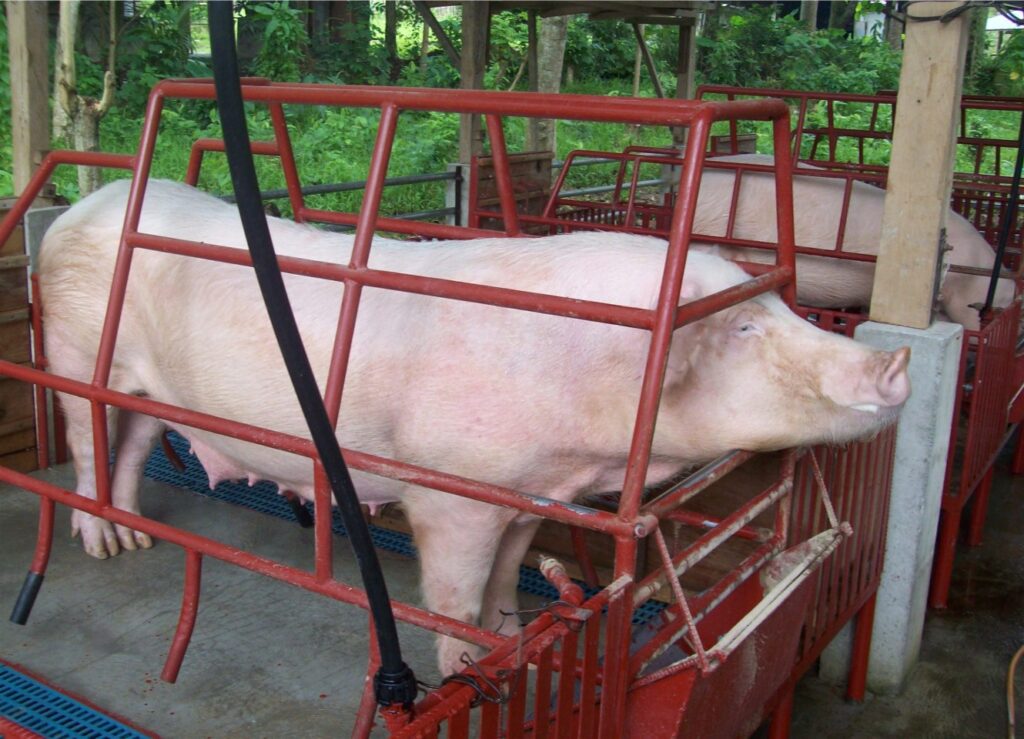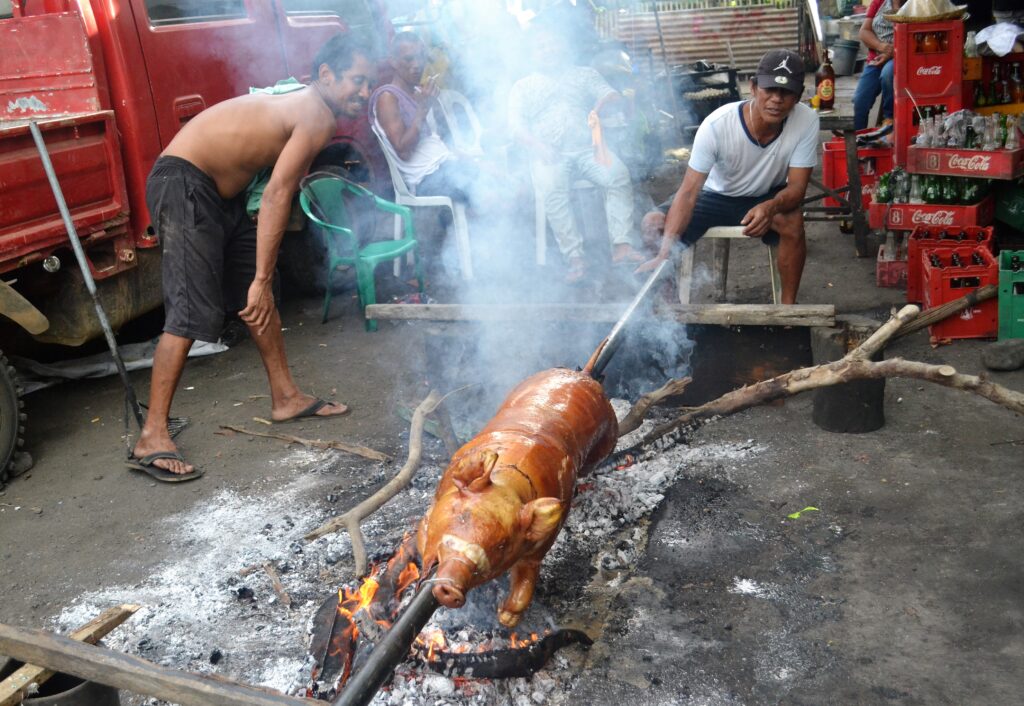Text and Photos by Henrylito D. Tacio
It’s not only the pandemic caused by coronavirus disease 2019 (COVID-19) that the Philippines is facing; there’s also African swine fever (ASF) which “has wiped out over a third of the country’s pig stock,” according to a report released by SciDev.Net.
The SciDev.Net’s source of information, who requested anonymity, said the Department of Agriculture “has underestimated the devastation caused by the ASF virus, which has resulted in severe shortages of pork, an important part of the Filipino diet.”
The shortage of pork in the market has led to a rise in the prices of many food items, including chicken, fish, beef, and vegetables.
The online media agency, PhilStar Global, reported that a total of 251,540 pigs were killed since the first outbreak in August last year. The Philippine Daily Inquirer, on the other hand, said over 68,000 hog raisers were affected.
In a report submitted to the World Health Organization, Philippine authorities confirmed they have not contained the disease. In fact, 69 new confirmed outbreaks were recorded, mostly in Luzon.
ASF is no ordinary swine fever. It is called as such because it comes from Africa, where it was first detected in the 1920s. The recent first ASF outbreaks were first reported in China – the world’s largest pork producer – in August 2018. It quickly spread to every province in the said country.
From there, ASF hopped the border into Vietnam, Laos, Cambodia, Indonesia, Myanmar, Mongolia, North Korea, and the Philippines. Outbreaks were also reported in some parts of Europe, South America, and the Caribbean.
“ASF is a contagious viral disease that affects pigs of all ages, inducing a hemorrhagic fever,” Food and Agriculture Organization (FAO) explains in its manual, African Swine Fever: Detection and Diagnosis. “It can appear in a variety of forms ranging from peracute, acute, subacute, to chronic and apparent. It is most often recognized in the acute form with an associated lethality of up to 100%.”

ASF is not just a health issue but also an economic concern. “African swine fever is a severe threat to pig production systems,” the FAO publication states. “It not only threatens food security and challenges the livelihoods of pig producers and other actors in the supply chain, but may also have major consequences on international trade as a result of trade restrictions.”
The Philippines ranks third to China and Vietnam in terms of pig production in Asia, data from FAO showed. Other top producers of pig in the region are Japan, South Korea, Thailand, Indonesia, India, and Malaysia.
A report from the Organization for Economic Cooperation and Development said that an average Filipino consumes about 14.2 kilograms of pork (2 kilograms more than the world’s average pork consumption).
Dr. Jaime A. Sison, a veterinarian who specializes in the area of pig and chicken and a regular columnist for a monthly agriculture publication, said the symptoms of ASF include high fever, decreased appetite, skin lesions, and diarrhea.
“The tricky thing about diagnosing a potential case of ASF is that it can look a lot like other more common diseases,” said Dr. Sison. “(Symptoms of ASF) is just like those of the common porcine epidemic diarrhea virus or classical swine fever.”
Dr. Sison urged swine farmers to report any suspected outbreaks to their local animal health officers, as it is much easier to test a false positive than to contain an outbreak that’s festered for days.
“ASF’s real calling card is its mortality rate: it claims almost all infected animals with 7-10 days of showing symptoms, and some drop dead much earlier – without showing any outward signs of illness,” Dr. Sison said.
The United Nations food agency says the ASF virus is shed in saliva, tears, nasal secretions, urine, feces, and secretions from the genital tract. “Blood, in particular, contains large amounts of virus,” FAO claims. “Pigs can therefore become infected by contact with many different infected sources, mainly infected pigs, pork, and other pig-derived products.”
As stated earlier, ASF can be transmitted through pork and pork products. It doesn’t matter whether the pork and products are raw, frozen, dried, or undercooked. The virus can survive for a long time. It remains infective for 15 weeks in chilled meat (and probably longer in frozen meat) and for months in bone marrow or cured hams and sausages unless they have been cooked or smoked at high temperatures.

The World Organization for Animal Health (OIE), based in the United Kingdom, calls ASF as “transboundary animal disease.” “Transmission can also occur via contaminated feed and fomites (non-living objects) such as shoes, clothes, vehicles, knives, equipment, etc.,” OIE explains. “These contaminated materials can be transported over long distances by vehicles and people.”
But the good thing is: “Although highly lethal, ASF is less infectious than some other transboundary animal diseases such as foot-and-mouth disease,” the FAO claims. In Africa, some indigenous pigs have been reported to have developed some degree of tolerance to ASF.
But unlike most transboundary animal diseases, ASF has no vaccines or drugs available to prevent or treat it. “It is particularly important that ASF-free areas are maintained as such,” FAO suggests.
An ounce of prevention is better than a pound of cure, so goes a saying. “Prevention starts with stringent measures at the borders and raising awareness among all stakeholders involved,” FAO recommends. “Early detection, early diagnosis, early response, and good communication are critical in minimizing the spread of the disease after incursion.”
The Department of Health (DOH) assured consumers that pork infected with ASF does not pose a risk to human health.
“We want to allay the fears of the public by saying that, as long as pork is bought from reliable sources and it is cooked thoroughly, pork is safe to eat,” said Health Secretary Francisco Duque III.
Agriculture Secretary William Dar echoed the same opinion. In a post on his social media account, he said that as long as the hogs passed through the proper process of slaughtering and preparation, the public should not fear eating pork.
FAO says the ASF virus survives well under most environmental conditions; 2-3 months in carcasses and sheds. It can even survive for many months in meat. “The ASF virus resists the freezing process but is inactivated by high temperature,” FAO points out. High temperature means 30 minutes at 70 degrees Centigrade.
Dr. Ann Garvey, an American veterinarian from Iowa State Public Health, says ASF affects only pigs and not human beings and other livestock. “African swine fever is a viral disease impacting only pigs, not people, so it is not a public health threat nor it is a food-safety concern,” she explains.
In the Philippines, about 71% of the swine population are raised in backyard farms, while 29% are in commercial farms, according to the Philippine Statistics Authority (PSA). Swine raising is very popular in rural areas because the raisers can always use swill to feed their pigs to minimize expenses in buying commercial feeds.
“In any case, pigs should not be fed swill that might contain pork,” FAO advises. However, in cases where swill is being used, “the swill should be boiled for 30 minutes, with periodic stirring, and cooled before feeding to pigs.”
Meanwhile, the Swine Crisis Management Task Force of the agriculture department has been promoting the ‘1-7-10 Protocol’ in areas where ASF outbreaks happen. Below is the brief explanation:
One refers to the one-kilometer radius, also known as a quarantine zone. It actually refers to “an area set to contain infection within one-kilometer radius from the affected farm by limiting animal movement and employing mandatory test and destruction of all infected animals.”
The seven is for a seven-kilometer radius, or what is called a surveillance zone. Here, “an area set within 7-kilometet radius intended to detect the extent of the infection through surveillance activities, disease reporting and limit the movement of live animals, animal products and by-products movement. Every movement outside this zone needs the required documents such as veterinary health certificates and shipping permits.”
The ten is for the 10-kilometer radius, which is the control zone. Here, “an area set at 10-kilometer radius intended to detect infection at an early stage through mandatory disease reporting.”
Dr. Sison, however, believed the only way to stop this disease is to depopulate all affected or exposed swine herds. “On-farm biosecurity is crucial to preventing any animal disease from developing and spreading,” he advised. “All pig owners and anyone involved with pig operations should know and follow strict biosecurity practices to help protect our pigs from ASF. Work with your veterinarian to assess your biosecurity plans and make improvements as needed.”
The PSA said that from 2016 to 2018, the swine industry showed increases. The volume of hog production for the fourth quarter of 2018 was estimated at 662.74 thousand metric tons. This was 2.01% higher compared with the 2017 output of 649.68 thousand metric tons.
The top three hog-producing regions during the period were Central Luzon, CALABARZON, and Northern Mindanao. These regions posted increases in production by 4.41%, 3.0%, and 3.52%, respectively. The combined production of these three regions accounted for 47.87% of the country’s total hog production.

